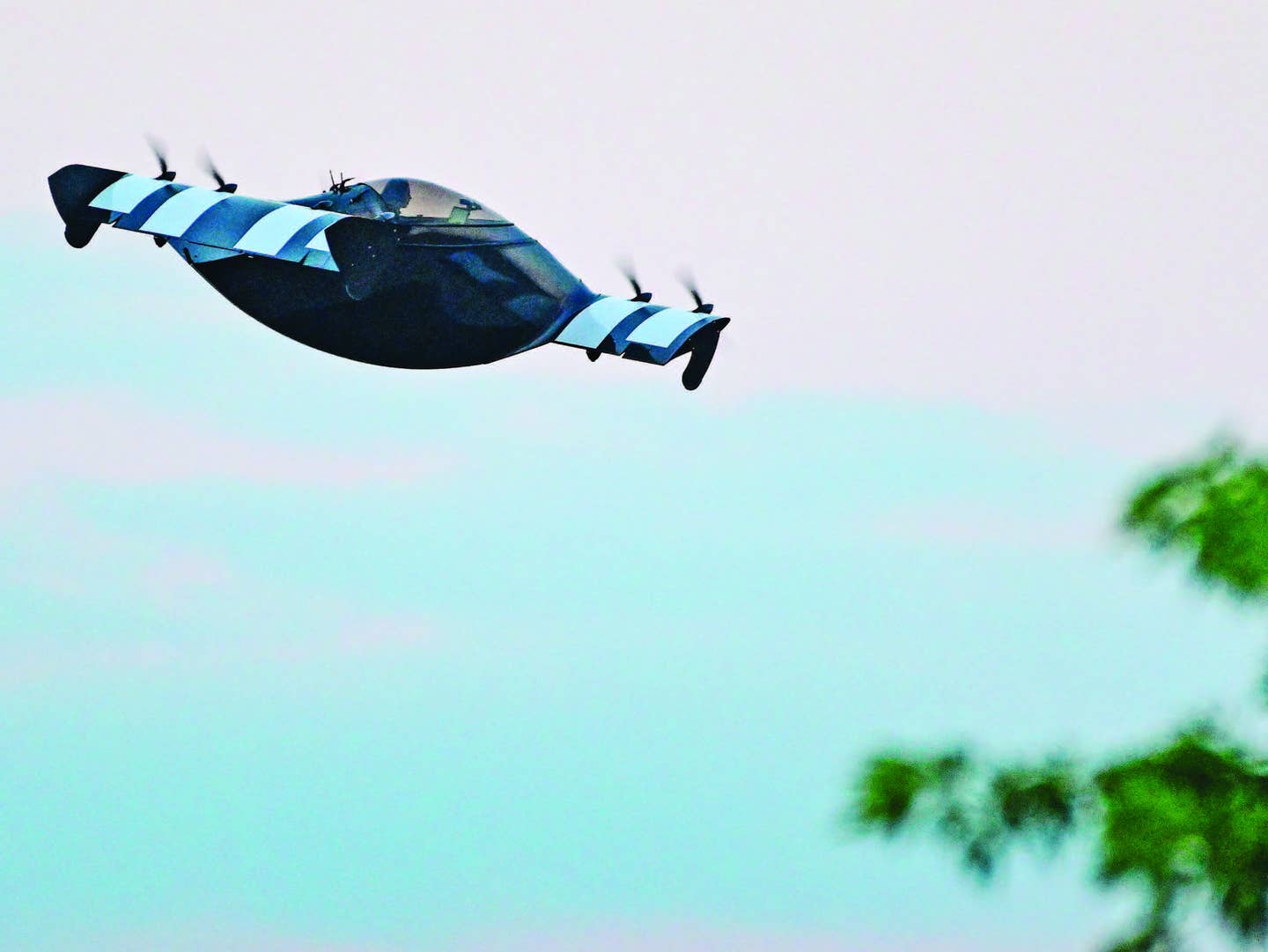Logging Actual IMC Requires More Than Clouds
From a moonless night to flying into a blinding sun, are you correctly logging ‘actual’ conditions?

[Credit: iStock]
It has long been said that the private pilot certificate is a “license to learn” as it is the foundation of a person’s flying career.
The FAA has said we may log an instrument approach if we are in actual or simulated conditions inside the final approach fix [Ref:§ 61.51(g)(3) and §61.57(c)]. But think about whether you were in actual IMC or not. As one example, you’re on a straight-in visual on a clear evening with the setting sun directly in your eyes, making any visual references in front of the aircraft useless. Although there’s not a cloud in the sky, you loaded the precision approach for belt-and-suspender situational awareness. That was a good call because the early evening sun is blinding any attempt to look out the window. You transition to the instruments and fly the approach, intercepting the GPS glide slope and keeping the VDI centered. Sun visors down, you finally see the runway and land. Was that loggable?
The Moonless Night Letter
Flash back to the early 1980s when Joseph Carr asked the FAA legal department some interesting questions about logging instrument flight time. One scenario is a flight over the ocean on a moonless night, without a discernible horizon for visual reference. Controlling the aircraft by 100 percent reference to instruments, is this loggable as actual instrument time even though the conditions were officially VFR? This resulted in a formal legal interpretation by the FAA’s chief counsel that’s commonly called the “Moonless Night Letter.” And while the rules for logging time (it’s in 14 CFR61.51) haven’t changed in close to 50 years, there’s an interesting discussion about actual versus simulated instrument conditions that’s worth talking about.
According to the Moonless Night Letter, “simulated” instrument conditions occur when the pilot’s vision outside of the aircraft is intentionally restricted, such as by a hood or goggles. Moreover, “actual” instrument flight conditions exist “when some outside conditions make it necessary for the pilot to use the aircraft instruments in order to maintain adequate control over the aircraft. Typically, these conditions involve adverse weather conditions.” Typically—but not always.
The chief counsel concluded that actual instrument conditions may occur in the case described, which is a moonless night over the ocean with no discernible horizon, if use of the instruments is necessary to maintain adequate control over the aircraft. Still, that brought yet more questions than answers.
The Six-Month Rule
Before 1997, the six-month rule for instrument currency in 61.57 also required six hours of instrument flight time. This may have originally prompted Carr to query the FAA, but discussions and questions about the Moonless Night Letter continue, which we’ll explore. They have not been addressed by the FAA, so we’ll speculate on the answers. You might have different opinions, and you might be right. Consider two concepts.
First, the Moonless Night Letter does not define “instrument meteorological conditions” (IMC). It defines “actual instrument flight conditions.” The two are not synonymous. The FAA defines IMC as conditions less than the requirements for VFR flight (see, for example,14 CFR 170.3 and the pilot/controller glossary).
The second concept is “adequate control of the aircraft.” To borrow two of the three oft-repeated trio of flight priorities, I’d say this refers to the ability to aviate, not navigate. The “aircraft instruments” referred to are the aircraft’s attitude instruments, not its navigation instruments. Put another way, the Moonless Night Letter permits us to log actual instrument time when outside conditions require us to use the instruments to keep the shiny side up. For example, a pilot flying on top of an overcast to a broken cloud deck, who has no difficulty flying level but needs to rely on some navaids to stay on course, is not in “actual.”
Who Needs an Instrument Rating?
It’s not only about instrument currency. Notably 61.65 requires 40 hours of instrument flight time for the airplane instrument rating, only 20 of which must be dual with a CFII. Some of those are commonly flown under simulated conditions. Could our student forgo the hood, find a desolate area on a moonless VFR night with high overcast, and build some of that time solo? Visibility might even be excellent, with another aircraft’s bright LED navigation and anti-collision lights clearly visible 20 miles-plus away. Putting the wisdom of that aside, the Moonless Night Letter presumes visual conditions qualifying for VFR, and there is nothing to suggest our student couldn’t log that. Then there’s the question of adequate control.
If you consider that this Moonless Night Letter refers to aviating and not navigating, when exactly do the outside conditions require instruments “to maintain adequate control over the aircraft?” There’s a lot of personal comfort, proficiency, and pilot discretion here. “The determination as to whether flight by reference to instruments is necessary is somewhat subjective, and based in part on the sound judgment of the pilot.” But the letter adds “the log should include the reasons for determining that the flight was under actual instrument conditions in case the pilot later would be called on to prove that the actual instrument flight time logged was legitimate.”
Most can agree on the “flight over the ocean on a moonless night without a discernible horizon.” Aviation texts and FAA handbooks and guidance (and countless National Transportation Safety Board accident reports) describe a series of visual illusions that can lead to severe spatial disorientation. Among them are sloping cloud formations, a nighttime scene with little ability to differentiate ground lights and stars, and “black hole” approaches and departures.
After that, reasonable opinions diverge. Flying above a broken cloud deck? Unless the cloud formations are sloping, even a student pilot should be able to maintain control. Similarly, on my checkout in the Colorado Rockies I was asked to do steep turns in a valley surrounded by mountains. It was disorienting and I had to go to instruments. That was the point, but it certainly wasn’t “actual instrument flight conditions.”
Can You Log the Approach?
The FAA’s 61.57 requires, among other things, logging six approaches and one hold in the past six calendar months to stay current. You might ask if you could log a practice approach while in Moonless Night conditions. In the scenario, the pilot heads to a remote airport in a desolate area, “activating the airport lights only after passing the FAF.” I don’t think there’s an easy answer, and my educated guess is a firm “maybe.” I don’t see a problem with natural phenomena such as the FAA-recognized “black hole” approach when there are no approach lights giving visual cues. But how would the FAA treat the decision to avoid turning on the lights? Is it “outside conditions?” Or is the pilot’s vision being “intentionally restricted” in a manner akin to simulated instrument flight?
Years after the famous Moonless Night Letter, if asked, the FAA might make a distinction between “natural” conditions resulting from outside causes and “artificial” conditions the pilot creates. Or it might say it doesn’t matter whether the conditions are natural or artificial, so long as the pilot (a) needs the flight instruments for aircraft control and (b) is not wearing a hood restricting the ability to see and avoid traffic.
That Blinding Sun
We began with a scenario where the position of the sun makes seeing the runway impossible, so the pilot flies the approach to find the runway. Here, there’s no “natural” vs. “artificial” distinction—it’s the sun. But what about the aviate-vs.-navigate distinction? If some of the horizon is visible to the sides, is flying the approach required to maintain control of the aircraft or is it simply a navigational aid?
Ultimately, it’s a judgment call. As the FAA chief counsel acknowledged, it is “somewhat subjective, and based in part on the sound judgment of the pilot.” One pilot in this situation might decide to log the approach—another might not. My best answer is borrowed from longtime aviation writer Bob Gardner who once said, “You are the best judge of whether an approach has made you a more proficient instrument pilot or has just allowed you to fill a gap in your log.” That has always been my personal guide.
Fortunately, this discussion is an academic mental exercise for most of us. We no longer have a time requirement, and Moonless Night conditions requiring an approach are uncommon. If you do encounter one, use your best judgment, but be prepared to justify it in the rare instance a question arises.
Mark Kobler is a regular contributor to sister publication IFR magazine, the journal for the accomplished pilot continuously looking to expand their knowledge base in the name of safety.

Sign-up for newsletters & special offers!
Get the latest FLYING stories & special offers delivered directly to your inbox






